A few dozen key rabbis of the main liberal Jewish movements in the United States and Israel demonstrated Tuesday at the most sacred prayer site of the Jewish people, the Western Wall in the Old City of Jerusalem. Carrying Torah scrolls, their aim was not to protest a recent UNESCO resolution—which oddly omitted any historical bond of the Jewish people to the holy basin in Jerusalem—but rather a protest against the prime minister of the Jewish state, Benjamin Netanyahu, and his government.
This episode represents a new low in what is now a 28-year long dispute surrounding the prayer arrangements at the Western Wall. The non-Orthodox Rabbis of the Conservative and Reform movements of North America have grown increasingly concerned that Netanyahu will renege on his commitment to create a special prayer plaza at the Western Wall for liberal, gender-egalitarian services. The designated plaza, which is currently an archaeological site, sits south of the great prayer plaza where men and women currently pray in designated segregated sections. In the new prayer space, Reform and Conservative groups could hold prayer services that reflect their custom of non-segregated worship. This custom runs contrary to Orthodox norms, the dominant strand of Jewish practice in Israel and the one currently in charge of management of the Western Wall. Notably, a few Israeli liberal Orthodox rabbis came out in support of the decision and against the prevailing exclusion of Reform and Conservative ritual from the site.
The cabinet decision has yet to be implemented, however. Ministers from two Haredi (Ultra-Orthodox) parties in the government coalition, United Torah Judaism and Shas, have prevented its implementation by threatening a political crisis. Faced with the political threat, Netanyahu changed his tune. Following the protest of the liberal rabbis, the prime minister accused the American Jewish leaders of instigating unnecessary friction and of unilateral violation of the status quo at the site, marking a shift from his conciliatory approach towards the North American Jewish leaders.
The prime minister is now effectively torn between his desire to placate the demands of the religious leaders of millions of American Jews and the demands of his powerful coalition partners. The Reform and Conservative rabbis correctly think they are outgunned.
The incident is telling not only of the delicate relations between Israel and American Jewry, but also of some of the thornier dynamics of religious life in Israel and the centrality of these issues in Israeli politics.
The secular state and religion
The current predicament is the result of an abnormal situation: Israel, despite being grounded in a secular Zionist ethos, is unlike its Western counterparts as the state oversees and regulates aspects of the internal religious affairs of its citizens through official state branches, including the Orthodox Chief Rabbinate for Jewish citizens. This branch is responsible for determining which foods can be stamped as “kosher,” who is considered a Jew, and who may marry or divorce.
Thus, the State of Israel, a mostly secular entity, is in charge of regulating religious rituals at holy sites. First among these sites is the Western Wall, or Kotel in Hebrew, which sits at the foot of the Temple Mount (Haram a-Sharif to Muslims) and Dome of the Rock and the Al-Aqsa Mosque, Islam’s third holiest site. It is a remnant of the buttresses of the Second Temple, destroyed by the Romans in the first century AD. Here, too, the state regulates religious life, determining the acceptable forms of worship.
Growing societal impatience with the Rabbinate
This model of state regulation through the Chief Rabbinate, anchored in Ottoman law and continued through British, Jordanian, and Israeli legal arrangements, is increasingly challenged, and not only by Reform and Conservative Jews, who despite decades of activity remain relatively unknown to most Israelis. The pushback comes today from a growing number of Jews who wish to express their religious beliefs outside the old and dusty structures. Many today are challenging the old denominational divisions created in the 19th and 20th centuries between Orthodox and non-Orthodox Jewish streams.
The pushback comes today from a growing number of Jews who wish to express their religious beliefs outside the old and dusty structures.
The challengers include small, local communities of individuals, including observant Orthodox Jews, creating their own independent religious environment, from Kosher food they consume, to Jewish yet non-establishment marriage ceremonies, to where and how they pray. Fewer today are willing to be dictated to by others on religious matters. At the forefront of this Western Wall issue is Women of the Wall, an organization of mostly, but not entirely, non-Orthodox women who spearheaded the demand for an egalitarian prayer space.
This renaissance in Jewish practice in Israel is occurring across all denominations of religious life, yet the religious establishment fails to appreciate its importance. It continues to resist pressure for reform, exerting its power through both political and legal procedures.
The result is a deep irony: as a result of historical legislation and political arrangements, an official arm of the state limits the religious freedom of its Jewish citizens. Some worshippers have even been arrested for praying at the Western Wall while not conforming to ultra-Orthodox traditions.
Prior to the establishment of the State of Israel in 1948 and Jordanian rule over East Jerusalem (1948-1967), the Western Wall had far less supervision and regulation over prayer (although a delicate balance was maintained with the Muslim prayer at the adjacent Al-Aqsa Mosque). There was more of a free market of ideas and beliefs. This privatized model fits the 21st Century as it allows for cultural pluralism.
Realistically, it is probably no longer feasible to return to this model. Given the political constraints, the most practical way forward would be for the Israeli government to simply accede to the construction of a pluralistic prayer space in the new section. This is not an ideal situation for all parties involved, but it is the only real solution to the disputed Western Wall.
The Brookings Institution is committed to quality, independence, and impact.
We are supported by a diverse array of funders. In line with our values and policies, each Brookings publication represents the sole views of its author(s).




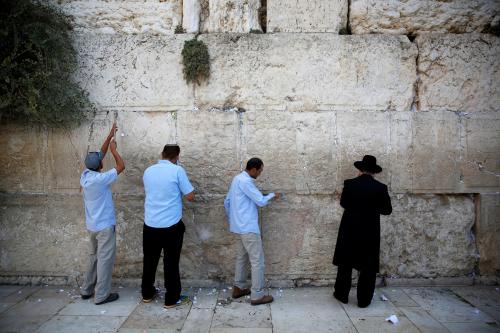
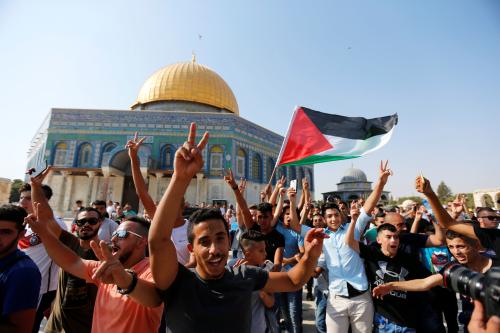
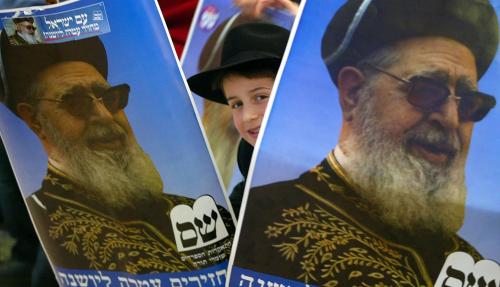
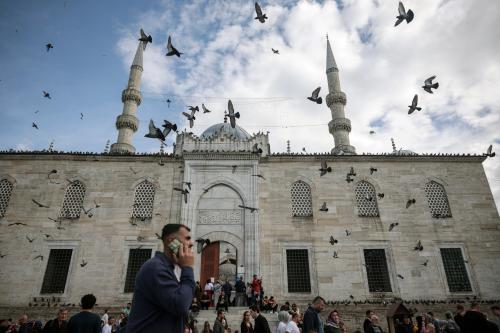

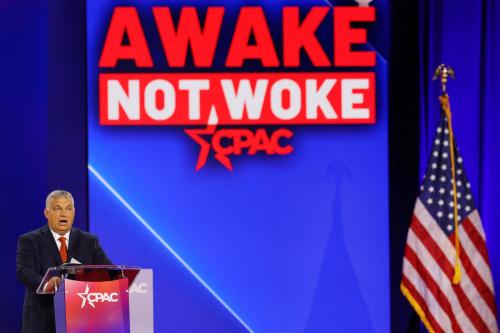
Commentary
The other Western Wall conflict
November 7, 2016